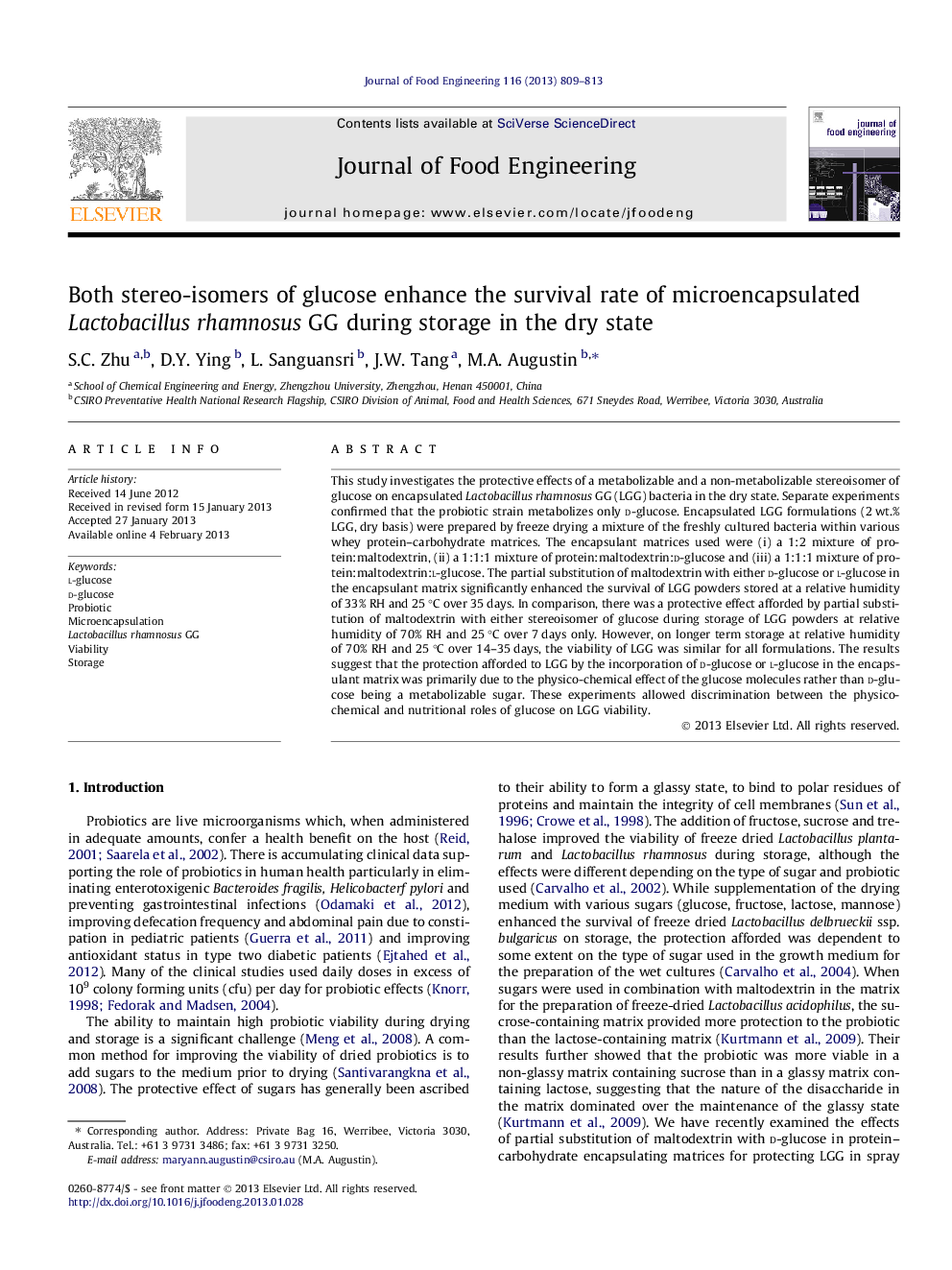| Article ID | Journal | Published Year | Pages | File Type |
|---|---|---|---|---|
| 223289 | Journal of Food Engineering | 2013 | 5 Pages |
This study investigates the protective effects of a metabolizable and a non-metabolizable stereoisomer of glucose on encapsulated Lactobacillus rhamnosus GG (LGG) bacteria in the dry state. Separate experiments confirmed that the probiotic strain metabolizes only d-glucose. Encapsulated LGG formulations (2 wt.% LGG, dry basis) were prepared by freeze drying a mixture of the freshly cultured bacteria within various whey protein–carbohydrate matrices. The encapsulant matrices used were (i) a 1:2 mixture of protein:maltodextrin, (ii) a 1:1:1 mixture of protein:maltodextrin:d-glucose and (iii) a 1:1:1 mixture of protein:maltodextrin:l-glucose. The partial substitution of maltodextrin with either d-glucose or l-glucose in the encapsulant matrix significantly enhanced the survival of LGG powders stored at a relative humidity of 33% RH and 25 °C over 35 days. In comparison, there was a protective effect afforded by partial substitution of maltodextrin with either stereoisomer of glucose during storage of LGG powders at relative humidity of 70% RH and 25 °C over 7 days only. However, on longer term storage at relative humidity of 70% RH and 25 °C over 14–35 days, the viability of LGG was similar for all formulations. The results suggest that the protection afforded to LGG by the incorporation of d-glucose or l-glucose in the encapsulant matrix was primarily due to the physico-chemical effect of the glucose molecules rather than d-glucose being a metabolizable sugar. These experiments allowed discrimination between the physico-chemical and nutritional roles of glucose on LGG viability.
► We examined the effect of l- and d-glucose on encapsulated LGG in the dry state. ► Both metabolizable and non-metabolizable glucose enhanced encapsulated LGG survival. ► Protection by glucose is due to a physico-chemical rather than a nutritional effect.
